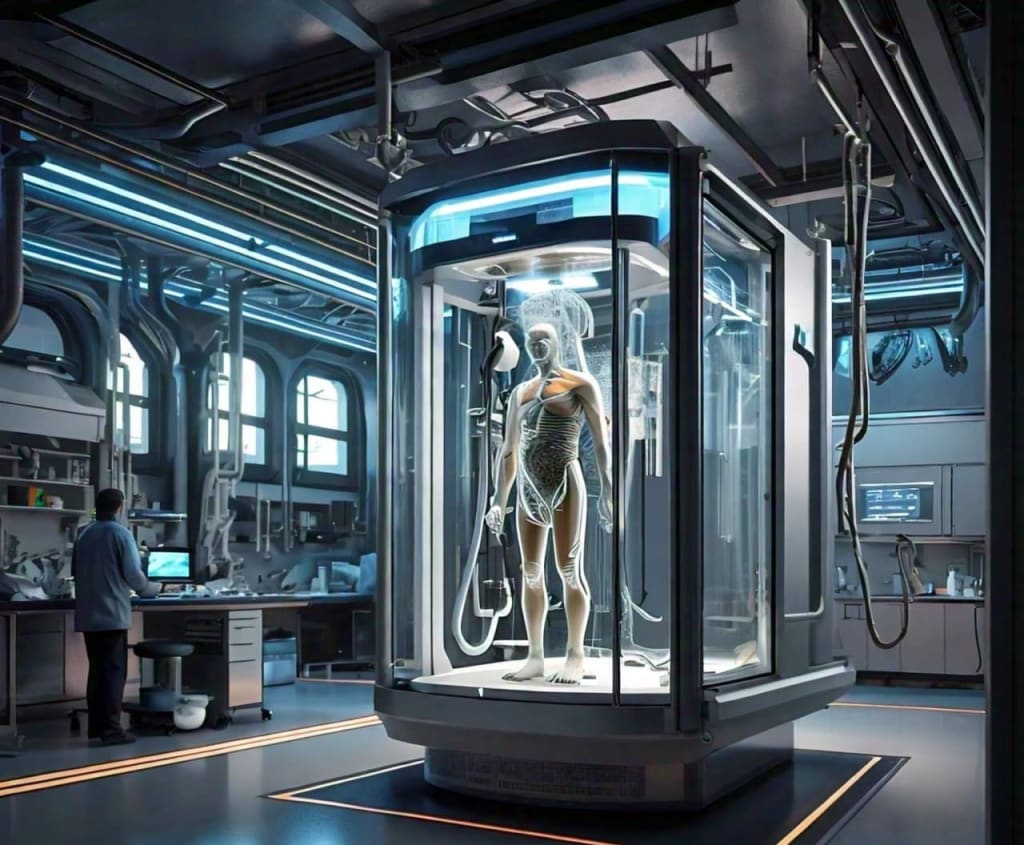The Intriguing Universe of Cryonics
Protecting Life Past Death

Title: The Fascinating World of Cryonics: Preserving Life Beyond Death
Introduction
Cryonics, a fascinating and controversial topic, has sparked intense debates in the scientific community and beyond. It's a practice that aims to preserve human life beyond death, with the hope of reviving it in the future. In this blog, we'll delve into the world of cryonics, exploring its concepts, procedures, and implications.
What is Cryonics?
Cryonics is the practice of preserving human bodies or brains at extremely low temperatures, with the goal of reviving them in the future when medical technology advances. The term "cryonics" comes from the Greek word "cryos," meaning "ice" or "frost." Cryonic preservation involves cooling the body or brain to a temperature of around -196°C using liquid nitrogen, with the aim of slowing down the decay process.
The Procedure
The cryonic preservation process typically begins immediately after legal death. The body or brain is cooled to a temperature just above freezing, and then perfused with a cryoprotectant solution to prevent ice crystal formation. Finally, the body or brain is cooled to its final temperature, where it is stored in a cryostat, a specialized container designed to maintain extremely low temperatures.
Types of Cryopreservation
There are two main types of cryopreservation:
1. Whole-body cryopreservation: This involves preserving the entire body, with the hope of reviving the individual in the future.
2. Neuropreservation: This involves preserving only the brain, with the goal of reviving the individual's consciousness or mind in the future.
Theories and Implications
Cryonics is based on several theories, including:
1. The idea that the human brain contains a person's identity, memories, and consciousness.
2. The belief that future medical technology will be able to revive and restore the preserved brain or body.
3. The hope that cryopreservation will allow people to cheat death and achieve a kind of immortality.
Implications of cryonics are vast and thought-provoking, raising questions about the nature of life, death, and human identity.
Challenges and Controversies
Cryonics faces several challenges and controversies, including:
1. Scientific skepticism: Many scientists question the validity and feasibility of cryonics.
2. Legal and ethical issues: Cryonics raises concerns about the definition of death, the rights of the deceased, and the potential for exploitation.
3. Cost and accessibility: Cryopreservation is a costly procedure, making it inaccessible to many people.
Conclusion
Cryonics is a fascinating and complex topic, sparking intense debates and discussions. While it's still a speculative and experimental practice, it challenges our understanding of life, death, and human identity. As technology advances, we may uncover new possibilities for preserving and reviving human life, making cryonics an area worth exploring and considering.
there are likewise a few expected secondary effects and dangers to consider:
1. *Freezing damage*: Ice precious stone development can make harm cells and tissues, possibly prompting irreversible harm.
2. *Oxidative stress*: Freezing and defrosting can prompt oxidative pressure, which can cause cell harm and passing.
3. *Dehydration*: Cryoprotectants used to forestall ice gem development can cause parchedness, possibly prompting cell harm.
4. *Toxicity*: Cryoprotectants can be poisonous to cells and tissues, possibly causing harm or demise.
5. *Thawing shock*: Defrosting can cause fast changes in temperature and science, possibly prompting cell harm or passing.
6. *Reperfusion injury*: Reestablishing blood stream to frozen tissues can cause harm and irritation.
7. *Psychological and social impacts*: Cryopreservation can prompt close to home trouble, social segregation, and lawful difficulties.
8. *Uncertainty and unknowns*: Cryonics is an exceptionally trial methodology, and the drawn out impacts and achievement rates are obscure.
It's vital to take note of that cryonics is certainly not a demonstrated technique for life expansion or restoration, and established researchers has not generally acknowledged it. Furthermore, the expense of cryopreservation can be restrictively costly, and the methodology brings up moral and lawful issues.
References:
- Cryonics Institute (2022). Cryonics: The Science of Cryopreservation.
- Alcor Life Extension Foundation (2022). Cryopreservation: A Comprehensive Guide.
- National Cryonics Awareness Association (2022). Introduction to Cryonics.
Note: The references provided are a selection of organizations and resources that offer information on cryonics. They do not necessarily represent a comprehensive or balanced view of the topic.
About the Creator
Tresha Kevin
I am Tresha Kevin an experienced content writer from the USA, boasting a decade of expertise in crafting engaging and informative content. With a keen eye for detail and a passion for story telling.
Enjoyed the story? Support the Creator.
Subscribe for free to receive all their stories in your feed. You could also pledge your support or give them a one-off tip, letting them know you appreciate their work.





Comments
There are no comments for this story
Be the first to respond and start the conversation.